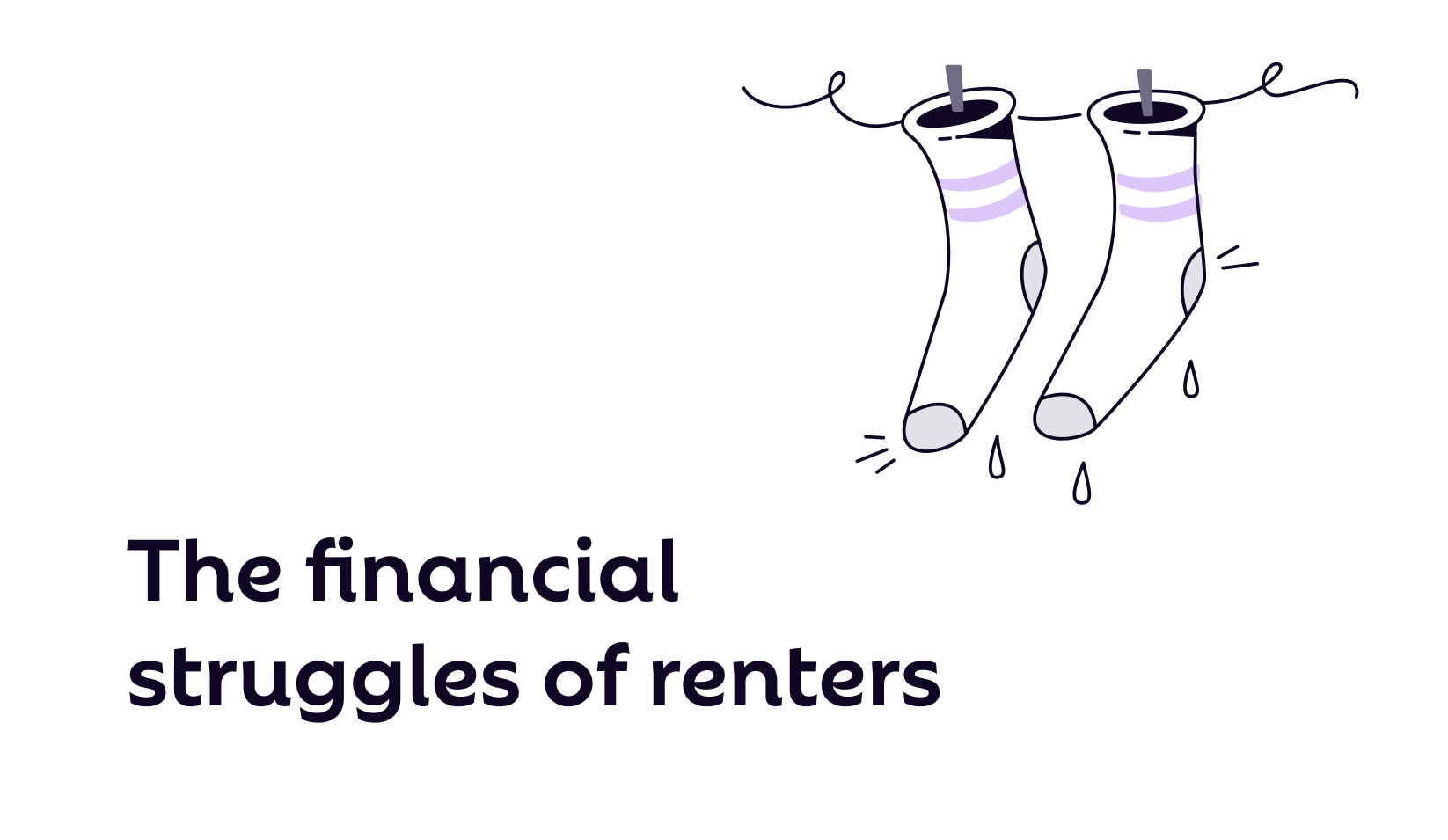Introduction
For millions of Americans, rent isn’t just a monthly expense—it’s a constant source of financial stress. With 65% of U.S. households living paycheck to paycheck, even a minor setback—a delayed paycheck, a medical bill, or a car repair—can derail a renter’s entire budget.
Yet, instead of accommodating financial unpredictability, the rent system demands full payment on the first of the month, regardless of when a renter gets paid or what unexpected expenses arise. When renters can’t pay on time, late fees, overdraft charges, and financial penalties stack up, making recovery even harder.
This system isn’t just outdated—it actively undermines renters’ financial stability. In this post, we’ll explore:
✅ Why renters struggle under today’s rent payment system
✅ The hidden costs of late rent payments, including fees, penalties, and eviction risks
✅ How flexible rent payments could help break the cycle of financial instability
The Reality: Most Renters Are Financially Stretched
For many renters, financial stability isn’t about thriving—it’s about surviving. And when rent consumes a significant portion of their income, even minor disruptions can be financially devastating.
📊 65% of Americans live paycheck to paycheck, leaving little room for unexpected expenses.
🏠 47% of renters spend over 30% of their income on housing, while 23% are severely burdened, paying more than 50% to keep a roof over their heads.
📈 National rent prices have increased by 5.8% year-over-year, while wages have failed to keep pace, further straining household budgets.
With such tight margins, one unexpected expense can send renters into financial distress.
The Hidden Costs of Late Rent Payments
For renters who can’t pay in full by the first of the month, the consequences are immediate—and costly.
🔹 Late Rent Fees – Many landlords charge 5-10% of monthly rent for late payments. For a one-bedroom apartment averaging $1,617, that’s an additional $81 to $162 per missed payment. In the past year, 23% of renters incurred a late fee, with 1 in 5 paying five or more.
🔹 Overdraft & NSF Fees – Renters who try to pay without sufficient funds may face $35 overdraft fees. In 2023, U.S. consumers paid $5.83 billion in overdraft fees, disproportionately impacting those already struggling.
🔹 Late Payment Fees on Credit Cards & Bills – Some renters turn to credit cards or payday loans, leading to even more debt. In 2023, Americans paid $186 billion in late fees on credit cards and utility bills, exacerbating financial strain.
Each penalty deepens the cycle—the more a renter struggles, the more they pay in fees, making it harder to catch up.
🚗 A Common Struggle for Renters
Imagine a warehouse worker in Phoenix who relies on his car to get to work. One month, he faces a $400 car repair bill. Without his car, he can’t work—but paying for the repair means he can’t cover rent in full.
The result?
✅ A late rent fee of $100
✅ An overdraft charge of $35
✅ High-interest credit card debt to cover the shortfall
This isn’t just a hypothetical scenario—it’s a reality for millions of renters. A single unexpected expense can snowball into months of hardship, making financial recovery nearly impossible.
Instead of offering solutions, the current system punishes financial unpredictability—even when renters have the income to pay.
The Ultimate Consequence: Eviction
For those who fall behind, the consequences extend far beyond late fees—they risk losing their homes entirely.
🚪 3.6 million eviction cases are filed annually in the U.S., disproportionately affecting low-income renters.
📈 Eviction filings surged by 50% in some major cities in 2023, compared to pre-pandemic levels.
⚖️ The cost of an eviction—including legal fees, lost wages, and moving expenses—can exceed several months’ rent.
For renters already on the financial edge, eviction isn’t just a temporary setback—it’s a long-term barrier to housing security. A single eviction can:
❌ Destroy credit scores, making it harder to rent in the future.
❌ Force families into homelessness—70% of families experiencing homelessness are headed by single mothers.
❌ Create lasting financial hardship, as many landlords refuse to rent to tenants with eviction records (which can stay on reports for up to seven years).
This isn’t just a renter problem—it’s a systemic failure that affects entire communities.
A Smarter Solution: Flexible Rent Payments
If rigid rent deadlines and excessive penalties are the problem, what’s the solution? Flexible rent payments.
Instead of requiring a lump-sum payment on the first of the month, flexible rent models allow renters to align payments with their pay schedules—helping them avoid penalties and manage their budget more effectively.
💡 How Flexible Rent Payments Help:
✅ Avoid late fees and overdrafts by offering payment flexibility
✅ Reduce eviction risks by allowing renters to split payments throughout the month
✅ Improve financial stability by giving renters more control over their cash flow
✅ Support credit-building by reporting on-time payments to credit bureaus
This approach doesn’t mean renters pay less—it simply means they pay in a way that works for them.
Final Thoughts: It’s Time to Fix a Broken System
For decades, renters have been stuck in a rigid, outdated system that doesn’t reflect the reality of modern work and pay cycles. The result? Millions of people struggling to keep up—punished for circumstances beyond their control.
Flexible rent payments represent a common-sense solution—one that empowers renters, reduces stress, and ultimately makes housing more stable for everyone.
📄 Get the Full Report
For a deeper dive into the data and solutions that can reshape the rental market, check out our full white paper:
📄 Breaking the Fee Cycle: How Flexible Rent Payments Improve Financial Stability and Housing Security
📩 Sign up here 👉 https://getflex.com/newsletter to get updates from Flex—straight to your inbox!



